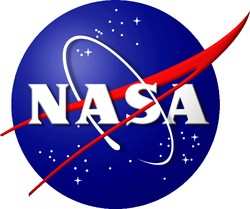Use Of Competitions And Prizes To Spur Innovation "Not Business
As Usual"
 NASA says its pioneering use of prize competitions and
innovation challenges is a dramatic departure from government's
traditional "business as usual." The agency says its innovation and
technology challenges include prizes that encourage independent
teams to race to achieve bold goals -- without any upfront
government funding. NASA benefits from private sector investments
many times greater than the cash value of prizes, and the agency
only pays for results.
NASA says its pioneering use of prize competitions and
innovation challenges is a dramatic departure from government's
traditional "business as usual." The agency says its innovation and
technology challenges include prizes that encourage independent
teams to race to achieve bold goals -- without any upfront
government funding. NASA benefits from private sector investments
many times greater than the cash value of prizes, and the agency
only pays for results.
"NASA prize competitions unlock the extraordinary, sometimes
untapped potential of U.S. students, private companies of all sizes
and citizen inventors," said NASA Chief Technologist Bobby Braun at
NASA Headquarters in Washington. "These individuals and teams are
providing creative solutions to NASA challenges while fostering new
technology, new industries and innovation across the United
States."
NASA claims a history of broad and successful experiences with
prize challenges. The agency is a leader in government-sponsored
competitions that solve problems to benefit the space program and
nation. Since 2005, NASA has conducted 20 Centennial Challenges in
six areas and awarded $4.5 million to 13 teams. Each challenge is
managed by non-profit organizations in partnership with NASA.
In July, NASA announced three new challenges and is seeking
non-profit organizations to manage them. The challenges are:
- The Nano-Satellite Launch Challenge is to place a small
satellite into Earth orbit, twice in one week, for a prize of $2
million. The goals of this challenge are to stimulate innovations
in low-cost launch technology and encourage commercial
nano-satellite delivery services.
- The Night Rover Challenge is to demonstrate a solar-powered
exploration vehicle that can operate in darkness using its own
stored energy. The prize purse is $1.5 million. The objective of
this challenge is to stimulate innovations in energy storage
technologies for extreme space environments, such as the surface of
the moon, or for electric vehicles and renewable energy systems on
Earth.
- The Sample Return Robot Challenge is to demonstrate a robot
that can locate and retrieve geologic samples from varied terrain
without human control. This challenge has a prize purse of $1.5
million. The objective is to encourage innovations in automatic
navigation and robotic technologies.
But wait, as the pitchman says, there's more. NASA's Centennial
Challenges program has an impressive track record for generating
novel solutions from student teams, citizen inventors and
entrepreneurial firms outside the traditional aerospace industry.
NASA is putting the innovations to work, as the agency recently
announced awards to two small aerospace firms for flight testing
rocket vehicles based on designs that won prizes in the Lunar
Lander Challenge. And, NASA's Green Flight Challenge offers $1.5
million for an aircraft with unprecedented fuel-efficiency. At
least 10 teams are preparing to compete next summer in the
challenge. Other agency challenges are focused on wireless power
transmission and super-strong materials.

In addition to the Centennial Challenges, NASA sponsors
innovation challenges, posing problems via the Internet to people
around the world. NASA uses open innovation platforms, or crowd
sourcing, to take advantage of group power from outside the agency
to help solve problems or to bring in new ideas. Current challenges
seek innovative solutions to health and medical problems of
astronauts living in space, the forecasting of solar storms and
exercise equipment for crews aboard the International Space
Station. Solutions are submitted in return for prizes or
recognition by the space program.
NASA recently inaugurated an employee challenge called
NASA@Work. This collaborative problem-solving program will connect
the collective knowledge of experts from around the agency using a
private Web-based platform. NASA "challenge owners" can post
problems for review by internal "solvers." The solvers who deliver
the best innovative ideas will receive a NASA Innovation Award.
 Airborne 07.21.25: Nighthawk!, Hartzell Expands, Deltahawk 350HP!
Airborne 07.21.25: Nighthawk!, Hartzell Expands, Deltahawk 350HP! ANN's Daily Aero-Term (07.27.25): Estimated (EST)
ANN's Daily Aero-Term (07.27.25): Estimated (EST) ANN's Daily Aero-Linx (07.27.25)
ANN's Daily Aero-Linx (07.27.25) NTSB Final Report: Luce Buttercup
NTSB Final Report: Luce Buttercup Classic Aero-TV: 'That's All Brother'-Restoring a True Piece of Military History
Classic Aero-TV: 'That's All Brother'-Restoring a True Piece of Military History




